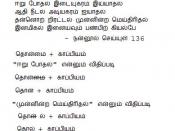How do children learn the meaning of words?
This question provokes many different answers from different psychologists based on how they choose to explore it. This essay will mainly focus on the nature vs nurture approach, looking at the inbuilt Language Acquisition Device (LAD) and the Language Acquisition Support System (LASS). It will also look at common errors children make as they acquire language and the type of language acquired first.
When studying language acquisition it is important to remember that there is empirical evidence supporting many different approaches to how language is learnt. One approach takes a nativist view on language acquisition, claiming it to be an inbuilt process that every person is born with. Chomsky (1965) came up with this theory, referring to it as the LAD theory. This takes a naturist perspective on how language is learnt, as it believes it can be learnt without any social interaction or encouragement from others.
It is also a determinist view as it suggests that everybody should be able to learn language fluently, without any prompters, due to the innate facility to acquire language that everyone has. It was introduced due to Chomsky's findings (1965) that all children pass through the same stages of early language acquisition, at around the same ages and with the same mistakes made.
Lenneberg (1967) built upon this theory by introducing the idea of a critical period for this inbuilt device to be used within. He stated that if a child did not learn language within the first 5 years of life, they would never learn it. This was disproven, to an extent, by the case study of the feral child Genie (1977) who learnt to talk at the age of 14 after being abused for making noise before this time. However, her language has...


